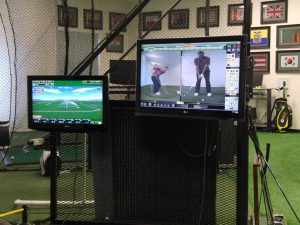Developing a Strength and Weakness Profile

By Dr. T. J. Tomasi, Keiser University College of Golf Senior Faculty and Director of Research
When I know students are serious about improving and have the time to devote to a program for change, I give them a calendar – a “when to do what” guide for improvement. It begins with a rating of the current strengths and weaknesses of their game. I advise them to take a yellow pad, draw a line down the middle, and label the two columns “Strength” and “Weakness,” respectively. Down the left side, they list all areas of their game, including chipping, pitching, lag putting, etc. They also list each club in their bag and then give each a proficiency rating down the right side, where they honestly evaluate each entry by annotating the appropriate columns. I advise them to keep a running list that gives them a handle on their playing profile and rate each of their clubs using 3 for weak, 2 for average, and 1 for strong. If they’d like, they can add decimals, as in 1.5, to create a more sensitive range. In addition to rating their clubs, it’s helpful if they also keep a journal where they record important golf experiences and observations – their history as a golfer.
What do they do with this information?
They use it to play the game by evaluating each situation and then choosing a club that is on the strength side. Plus, their record-keeping tells them what to practice to improve their games. For example, by keeping their stats, they may discover that their short irons could be more accurate. When it’s time to lay up on a par five, they can use this information to govern their lay-up choices. That is, lay up, so they have a six iron (a mid-iron they hit well) vs. a nine iron they have trouble hitting accurately. This entry in their journal also shows them that they need more practice with their short irons. They must remember – the scorecard has very small boxes because they want a number, not a narrative.
The Takeaway 1: A major aspect of playing one’s best golf is fitting their Strength and Weakness Profile into the defenses set up by the architect, given the current conditions and circumstances of the play. To do this, they must accurately assess their playing skills, which are often different from their practice range skills. For this reason, I encourage them to develop both a practice and a playing profile and to continually compare them. Their playing profile reveals how well they perform when shot selection depends not only on the conditions but also on their ability to execute under the one-ball-success rate – a situation where every swing counts.
Takeaway 2: Golfers should never confuse their playing and practice profiles. As they exercise their weak areas, their practice profile will improve, but the key to becoming a better golfer is learning how to transfer that improvement to the golf course.

Here is an example of a teaching/learning station. As you can see, it provides numbers and visual representations that help students keep their records up to date. Do you want to know the spin rate of your favorite wedge or how far your average driver carries? The answers are here; just waiting to be logged into your S/W profile. For a detailed analysis of developing a viable strength/weakness profile, see my book, The 30 Second Swing.
If you’d like to study with Bradley Turner and other PGA Master Professionals, contact the College of Golf today.














